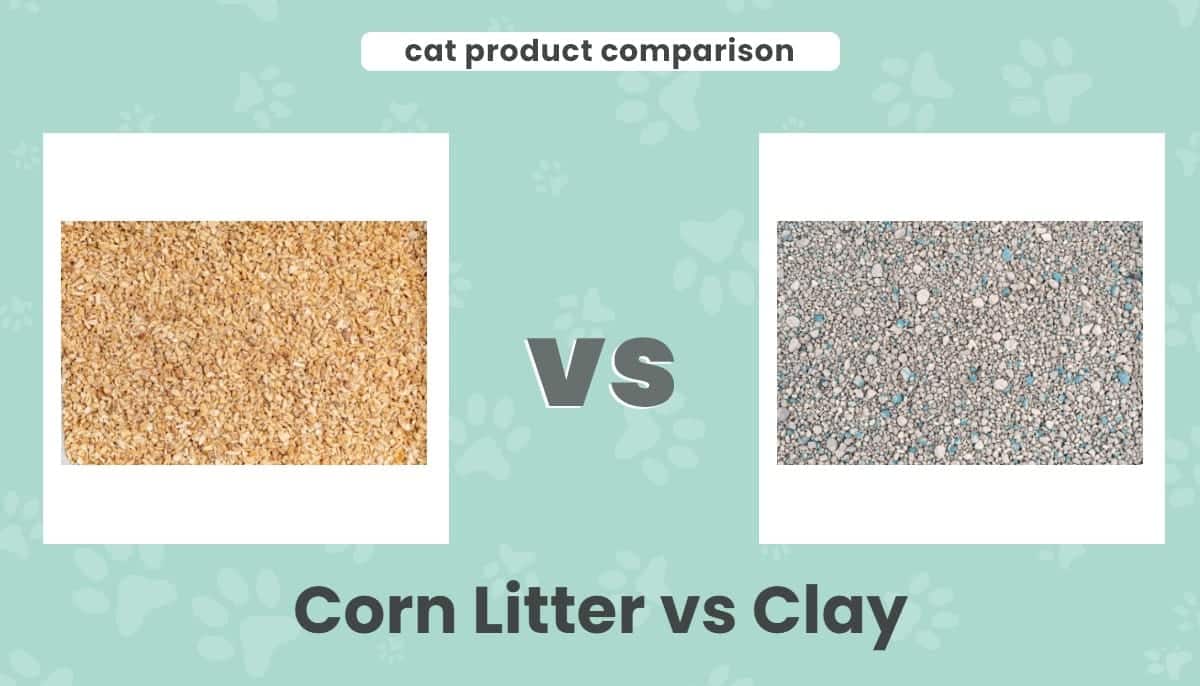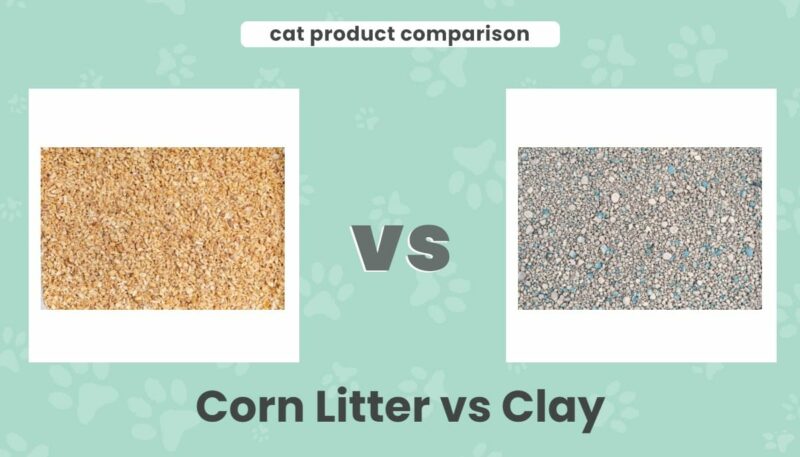If you’re looking for an environmentally friendly cat litter, you may be wondering if corn litter is a better option than clay. Both have their pros and cons, but which one is the best choice for you and your cat? In this article, we’ll compare corn litter to clay and help you decide which one is the best fit for your home.
How Do Corn and Cat Litter Compare? Which Is Better?
Let’s look at a few aspects you might consider when choosing cat litter to determine which one is the better choice.
Eco-Friendliness
- Winner: Corn Litter
When it comes to environmental friendliness, corn litter has the upper hand. Corn is a renewable resource that can be grown without harming the environment. Clay, on the other hand, is a non-renewable resource that is mined from the earth. This mining process can cause pollution and damage to the environment.
Corn litter is also biodegradable, which means it will break down over time and won’t end up in landfills like clay litter will. Clay litter can take hundreds of years to break down, so it’s not the best choice if you’re looking for an eco-friendly option.
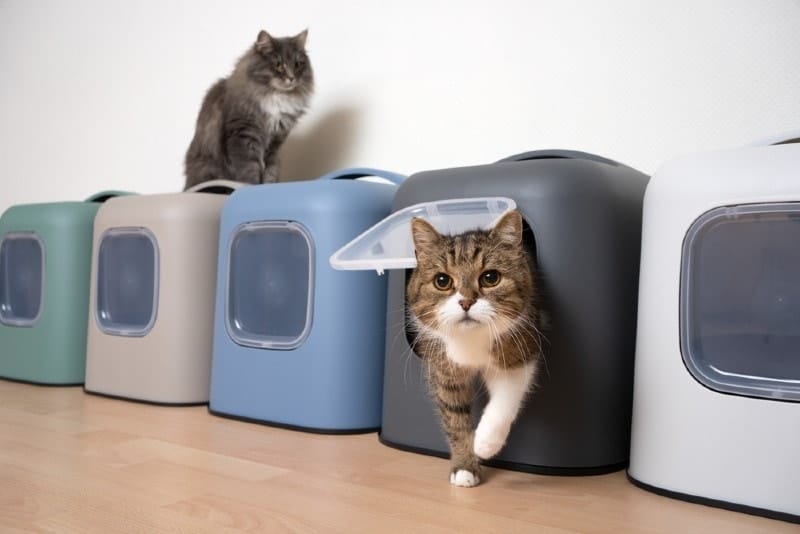
Absorbency
- Winner: Clay Litter
In terms of absorbency, clay wins out over corn. Clay is able to absorb more moisture, which means it will do a better job of keeping your cat’s litter box dry. Corn litter is more likely to form clumps when wet, so it may not be the best choice if you have a cat that tends to urinate a lot.
Dust-Free
- Winner: Corn Litter
If you’re looking for a dust-free option, corn litter is the way to go. Clay litter can be quite dusty, which can cause respiratory problems for both you and your cat. Corn litter is much less dusty and is a good choice for homes with allergies or asthma.
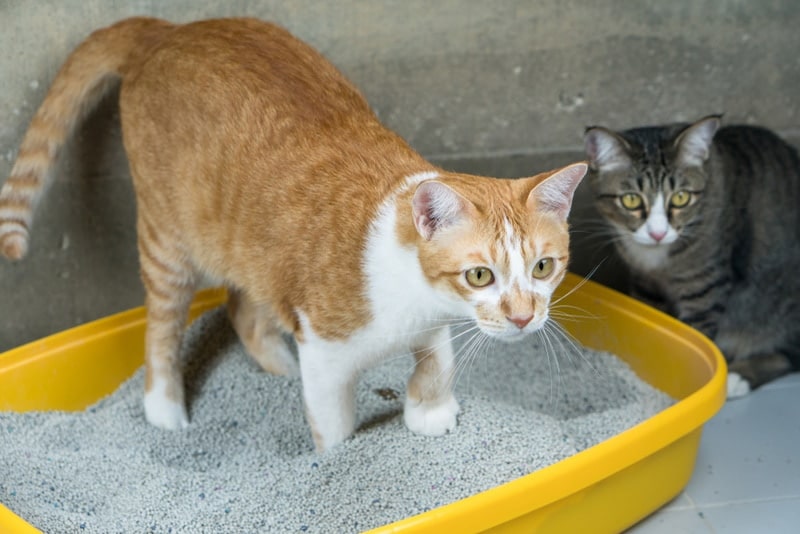
Cost Effectiveness
- Winner: Clay Litter
In terms of cost, clay litter is the more affordable option. A bag of clay litter will last you longer than a bag of corn litter, so you won’t have to replace it as often. Corn litter is also more likely to be organic and free from additives, which can add to the cost.
Corn Litter: Pros & Cons
Now that we’ve compared corn litter to clay, let’s take a closer look at the pros and cons of each type of litter.
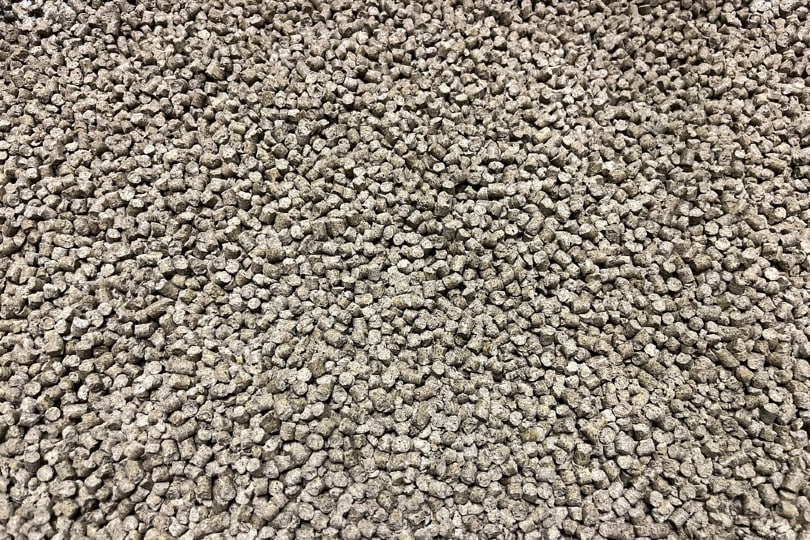
- Environmentally friendly
- Biodegradable
- Less dusty
- More natural than clay
- Not as absorbent as clay
- Can be a breeding ground for bacteria and mold
Clay Litter: Pros & Cons

- More absorbent than corn litter
- Dust-free option
- Naturally occurring material
- Not biodegradable or recyclable
- Can be harmful to the environment if not disposed of properly
- Dusty (can cause respiratory problems)
So Which Type of Litter Is Best?
So, which type of litter should you choose? It really depends on your individual needs and preferences. If you’re looking for an eco-friendly option, corn litter is the way to go. If you’re concerned about absorbency or dust, clay may be a better choice. Ultimately, the decision comes down to what’s best for you and your cat!
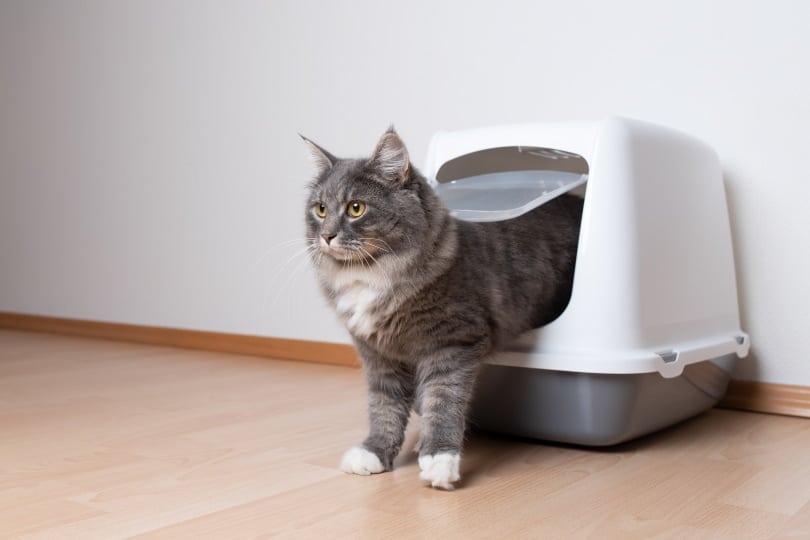
Caring for Your Cat’s Litter Box
No matter which type of litter you choose, it’s important to keep your cat’s litter box clean. A dirty litter box can lead to health problems for your cat and a smelly home. Scoop out the waste daily and change the litter completely every week. Keep the litter box in a quiet, private area away from loud noises or busy foot traffic. Most importantly, make sure your cat has easy access to the box so they can use it whenever they need to. A clean litter box is crucial for a happy and healthy cat!
Transitioning Your Cat to a New Litter
If you’re thinking about switching litters, there are a few things you should keep in mind.
- Introduce the new litter gradually by mixing it with the old litter. This will help your cat get used to the new smell and texture.
- Make sure to scoop out the waste regularly and change the litter completely every week.
- Keep the litter box in a quiet, private area away from loud noises or busy foot traffic.
- Make sure your cat has easy access to the box so they can use it whenever they need to.
A gradual transition will help your cat adjust to their new litter and avoid any accidents!
Conclusion
There are many factors to consider when choosing a litter for your cat, including biodegradability, absorbency, dustiness, and naturalness. Ultimately, the decision comes down to what’s best for you and your cat. If you’re looking for an eco-friendly option, corn litter is the way to go. If you’re concerned about absorbency or cost, clay may be a better choice. Either way, the health and happiness of your cat should be your top priority. And, as always, if you’re ever unsure, the best person to talk to is your veterinarian.
Featured Image Credit: BW Folsom, Shutterstock (L), Nynke van Holten, Shutterstock (R)

